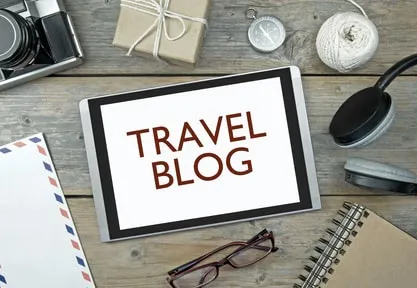Once upon a time, a travel blog was a nomad’s way of telling stories about their traveling adventures with friends, family, and the online world. Today, travel blogs have transformed into much more, allowing their owners to sell travel-related products or earn money with affiliate marketing and sponsorships. If you want to start a travel blog, this guide is for you.
Setting up your travel blog is similar to setting up other blogs, but with a few twists and tweaks that focus more on the travel niche and the visitors you’ll draw in. Here’s how to get started:
1. Choose Your Travel Niche

Your travel blog should be about more than just general travel. Although that certainly is a niche you can pick, diving deeper into the niche will ensure that you get the perfect audience following your site. Your sub-niche should fit your interests perfectly but also have enough interest among a broader audience that others will want to read your content. It’s tough to find a niche that’s 100% unique on the web, but the more specific you can get, the better.
Here are a few ideas for sub-niches for a travel blog:
- Location-specific travel (like a specific state, country, or even city or town)
- National Park travel
- Hiking
- Disney World/Disneyland vacations
- Traveling with children
- Adventurist travel
- Solo travel
- Couples travel
- International travel
- Luxury travel
- Travel photography
- Traveling on a budget
2. Set Up Your Site
Next is the actual setup of your site and its pages. After you choose your web host, blogging platform (like WordPress), and theme, you can add plugins to improve its functionality. Most blogs benefit from having a Google Analytics Dashboard plugin that lets you track visitors easily. You should also consider adding share buttons to let visitors share your content to their social platforms.
Your main pages may differ from other travel blogs, depending on what you want to highlight. An about page and contact page are generally necessary so visitors can learn more about you and know how to get in touch with comments or questions. If you plan to feature products on your site, you’ll also need a shopping page. You might also want a media kit page if you plan to include sponsored posts or engage in sponsored travel.
Look at some of your favorite travel blogs for inspiration to decide what pages are best to include on your site.
3. Create Content

Now, it’s time to build your site with content. Your blog content should be SEO-focused (this list of best SEO tools can help) and target your travel sub-niche. Getting a content calendar in place before you start writing can get you organized and keep you on schedule. Be sure to keep a list of blog ideas as you come up with them, too, so you’ll always have new topics handy.
Here are a few tips for creating your travel blog content:
- Write with your audience in mind. Think about who will be reading your blog and what they’ll want to know and shape your content around those points.
- Make your content readable. Use images, graphs, headings, bullet points, and other elements that break up your text.
- Use links. Link to other pages on your site to keep visitors on your blog and boost SEO value. You should also link to other authority sites that supplement your content.
- Promote, promote, promote! Each blog post should be promoted on social media in addition to being posted on your blog. You can also wait a couple of weeks and syndicate your content on LinkedIn or Medium with a link back to your blog. Commenting on other travel blogs is also a great way to get your name and website link out there.
4. Capture Emails
Building an email list is crucial for any blogger who plans to use their blog as a springboard for a business in some form. Your email subscribers are your new potential customers to market to.
Set up a popup builder that includes a pop-up to capture emails from visitors and integrates with email marketing software that lets you customize and schedule emails to send to your subscribers. Plan email content in your content calendar, just like you would your blog content. As a travel blogger, you can create email content like giveaways for travel gear, free email courses on travel photography, and other travel-focused content your subscribers will love.
5. Make Money

Travel bloggers commonly make money through affiliate marketing, sponsored posts, or selling their own products on their website. Other travel blog monetization ideas include advertising, sponsored videos, or freelance writing for other travel bloggers or companies.
Have your money-making plan in place before you work on content. Doing so will help you plan your content around your primary money-making strategies. It takes time to build a blog into an income-earner, though, so be sure to have plenty of traffic-driving content on your site before you head full-force into searching for sponsored opportunities.
Networking with other travel industry authorities and making a presence on social media platforms will continue benefiting your blog to grow into one that can become a business. Travel blogging is a highly visual niche, so sharing your travel adventures through beautiful photos on social media platforms like Pinterest and Instagram is an excellent strategy for growing your social media audience. Start building your Instagram audience by installing our Instagram follow button, which makes it easy for your blog visitors to follow you on Instagram with a single click. It’s easy to install and totally free to use, so you can start growing your Instagram audience today!




